Insect Orders and an Introduction to the other Arthropods
Martha O'Kennon
Let's do the easy part first.
All insects (if they haven't been wounded) have six legs. They also have a distinct head, thorax, and abdomen. The eyes are on the head. All the legs come out of the thorax. This is easy to see in the case of most beetles. The body has three clearly delimited segments.
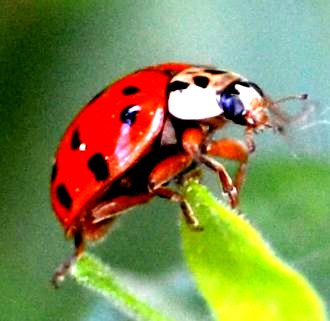
Question: Here is an arthropod with six legs. So is it an insect?
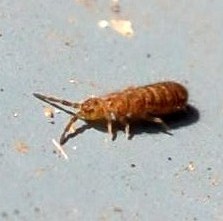
No! It's a springtail!
When I began my observation of the local insects in Virginia at the age of eight or nine, Springtails were counted as insects and I had never seen one. Grasshoppers, Katydids, and Crickets were in the order Orthoptera (straight-wings) and so were Cockroaches, Mantids, and Walkingsticks, each of which now has its own order. How can we account for these changes? At that time, DNA sequencing was not quite known, but since about 10 years afterward, it has been, thanks to the labors of Rosalind Franklin, an expert on xray diffraction, whose work immediately showed the helical nature of the DNA molecule; and a couple of other guys at the University. This has also meant that a lot of the scientific names have already undergone changes as the species have moved in and out of their old classifications.
Here are just some of the springtails that have shown up on my shop siding since I began noticing them in 2017. The middle image is probably that of a globular springtail, while the third image is of a member of another family of springtails, Tomocerus minor. (Images 2 and 3 were taken in 2017 spring).
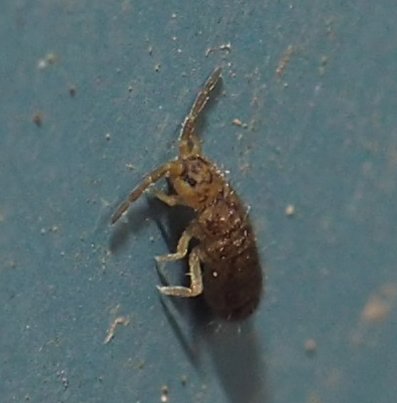
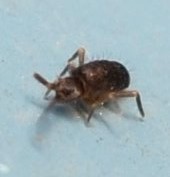
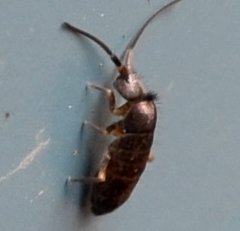
Difference between Bugs and Beetles - an Introduction
Here is something that Boris Buche of iNat told me. It must be something that EVERYONE except me learned in kindergarten. Bugs have 3 or 4 segments in their antennae; Beetles have more. As you look at the examples in this outline, check that first!
Inside the order Coleoptera (Beetles), there are smaller groups. Here are a few (By all means not all)of them.
First is a longhorned beetle, but more specifically, it is a flower longhorned beetle, Strangalia femelica.
Second is an Asian Lady Beetle; third is a leaf miner beetle.
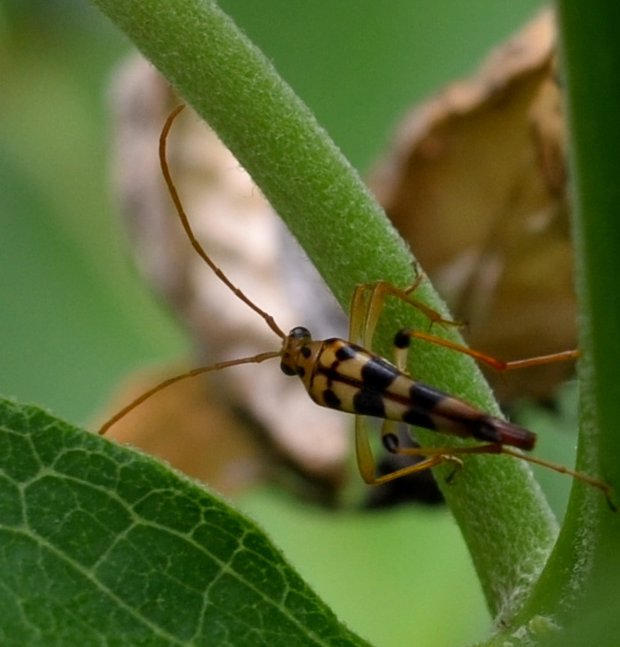

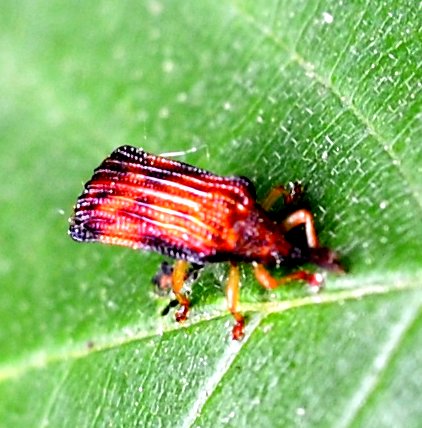
Here are three more Beetle groups. The Rhubarb Weevil is one of my favorite weevils, another group of beetles. I usually call it the "banana"
weevil, since it has a long black snout and skin the color of a ripe banana. At the end of its snout it has two branches coming out. This is a true hint that your beetle is really a weevil. Second is an Eyed Elater, a click beetle with enormous eyes. It likes well-ripened raspberries. This gorgeous red and black one is a Lily Leaf Beetle, a member of the Leaf Beetle family.
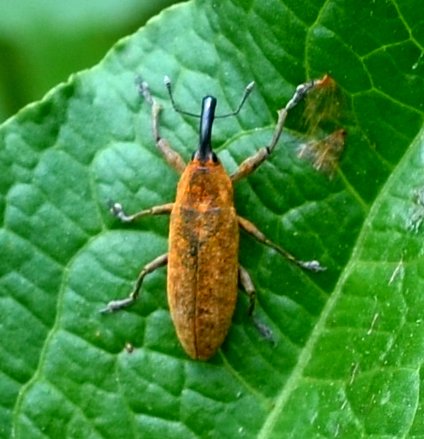
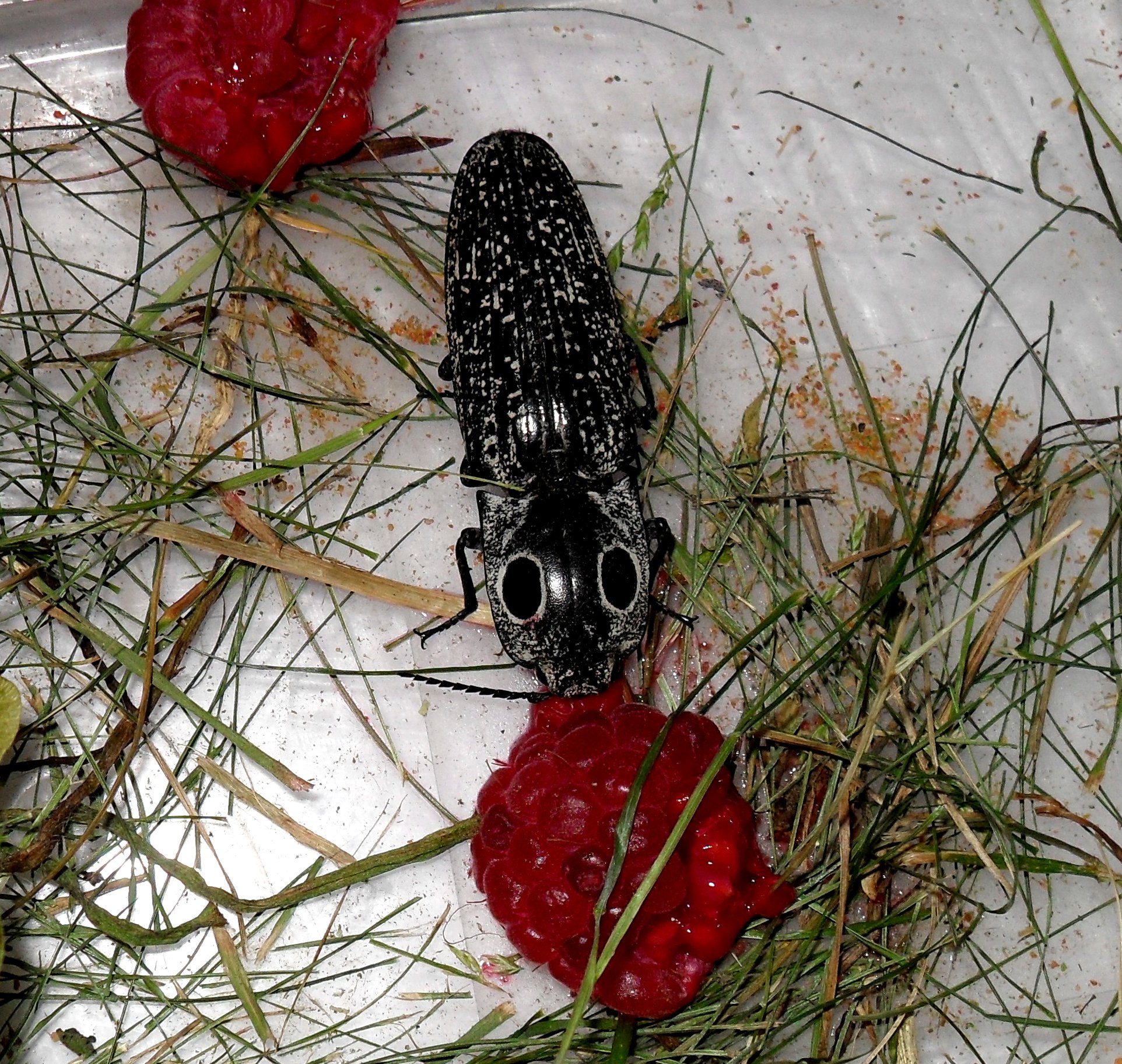
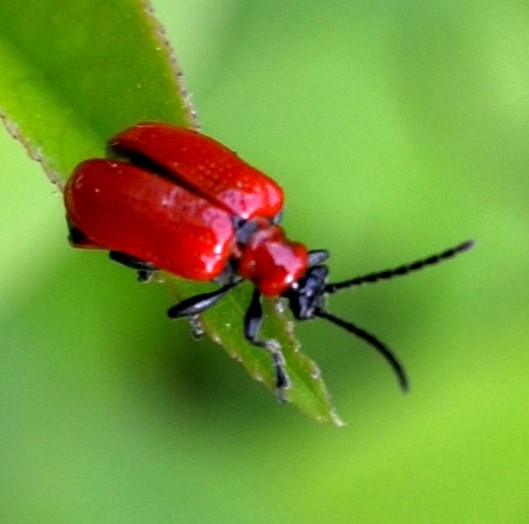
You have to learn how to tell the difference between a Beetle (order Coleoptera) and a Bug (order Hemiptera). Here are some of the great variety of Bugs. One difference is that Beetles have hard outer wings, which protect their delicate inner wings, which they use in flying. (Naturally, there is a nasty exception to this rule.) In many Bugs, their hard wings do not completely cover the inner wings. You can see this easily in Stink Bugs (picture 1) and Plant Bugs (picture 2). But this property goes away when we get to the Hoppers. One of my favorite Bugs are the Leafhoppers. Picture 3 shows a Red Striped Leafhopper.
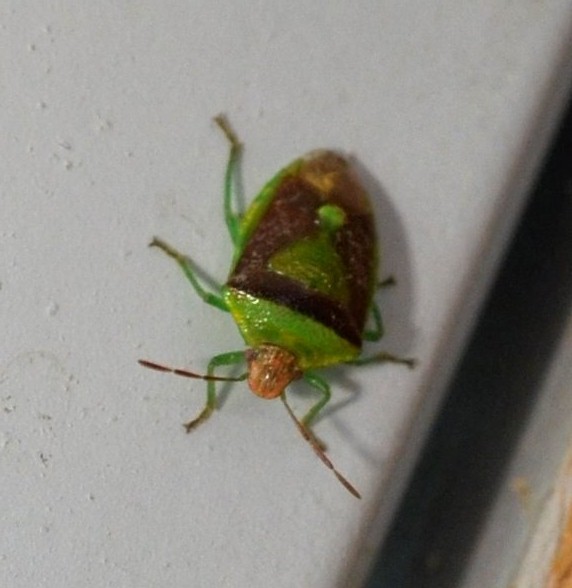
 adult 6 9 15ab.jpg)
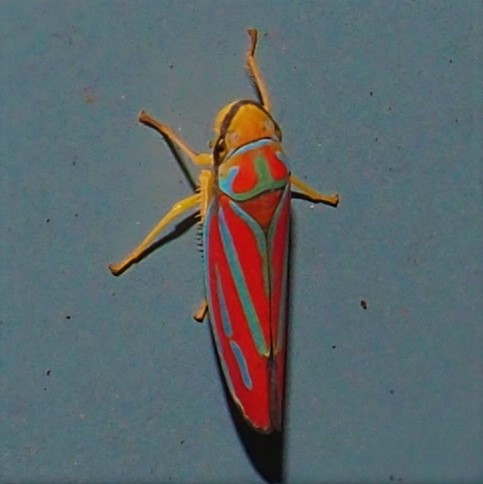
Planthoppers also throw that rule out the window. Here is a Citrus Flatid Planthopper. Same for Treehoppers.
Second is a green Buffalo Treehopper. Third is the Keeled Treehopper, a particular favorite of mine, which you've seen now in the Thistle Community. And fourth is my oldest favorite Treehopper, the Two Mark Treehopper, which plays a similar role in the Redbud Community.
 7 13 17 1.jpg)

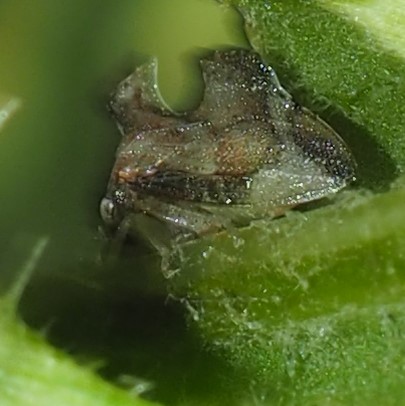
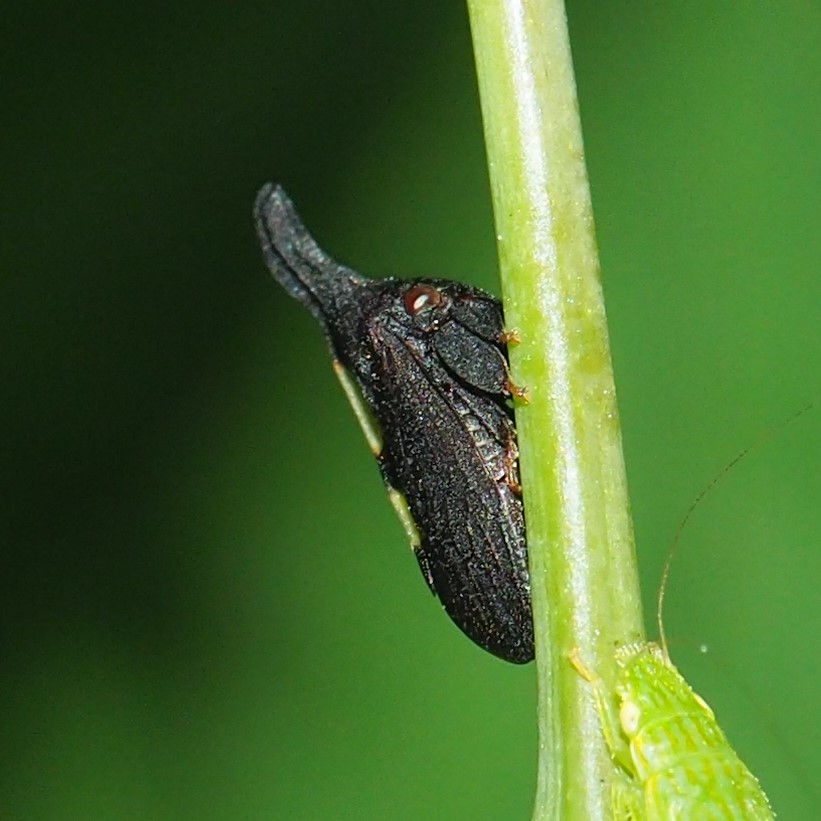
Here is another fascinating kind of Bug. And deadly to its neighbors. First is one that we see fairly often around here in its adult form. It's the Assassin Bug, Zelus luridus. Note its heavy-duty snorkel, which it uses to pierce the body of its unlucky prey. It also holds its arms in a style that should remind you of a Mantis' arms. Picture 3 is of a Damsel Bug, which sounds erroneously like a delicat harmless creature. But it also uses its arms to grasp its prey, and stabs them with its snorkel (or rostrum, for you Bio Buffs).
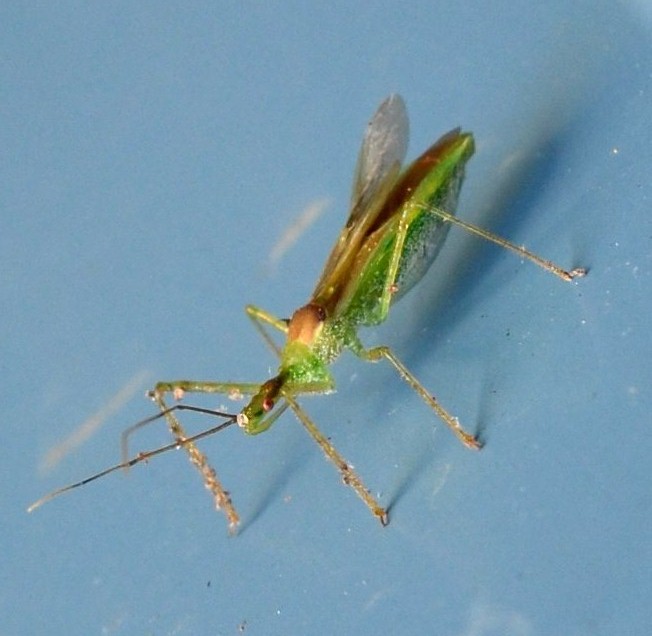
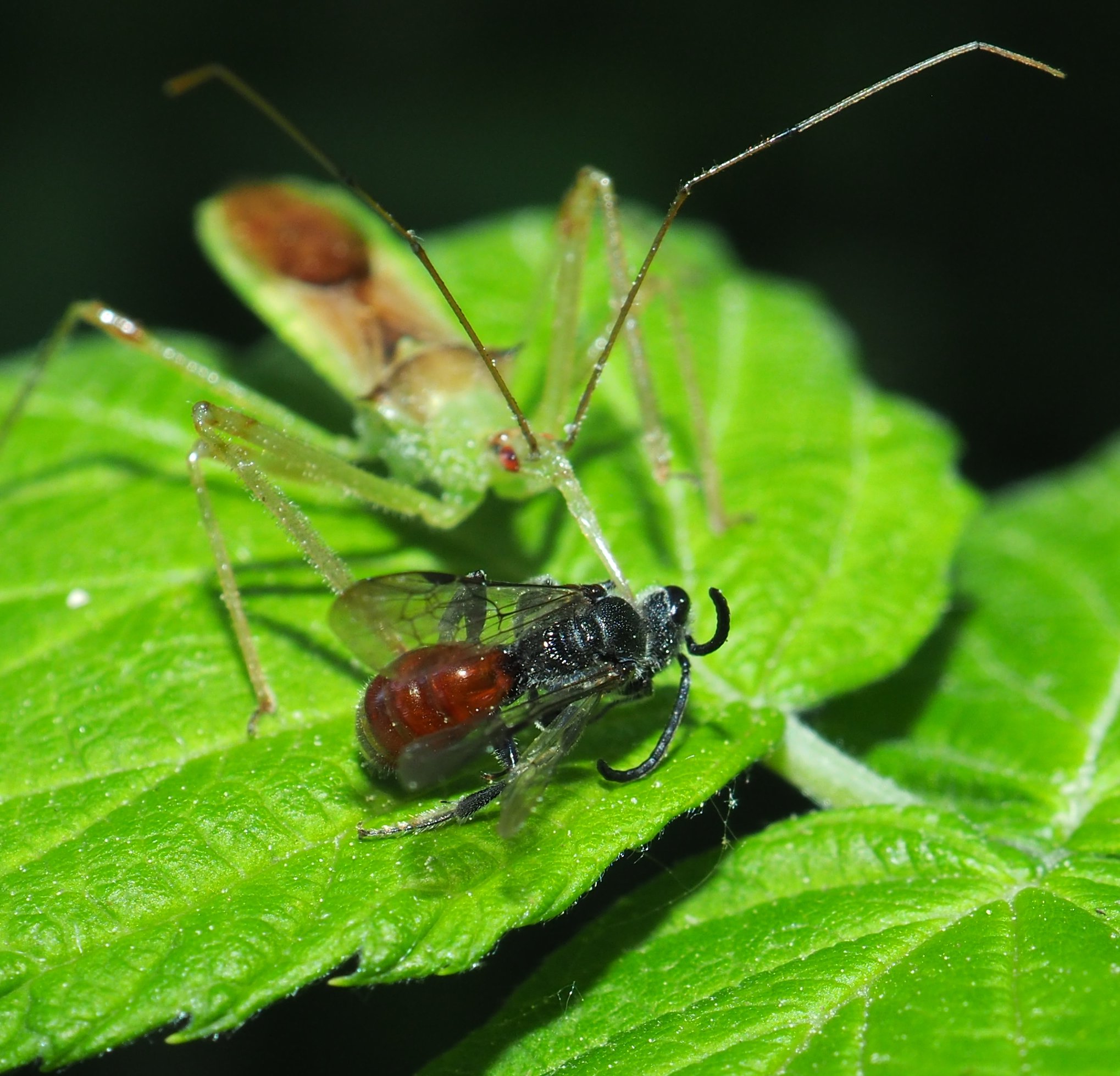
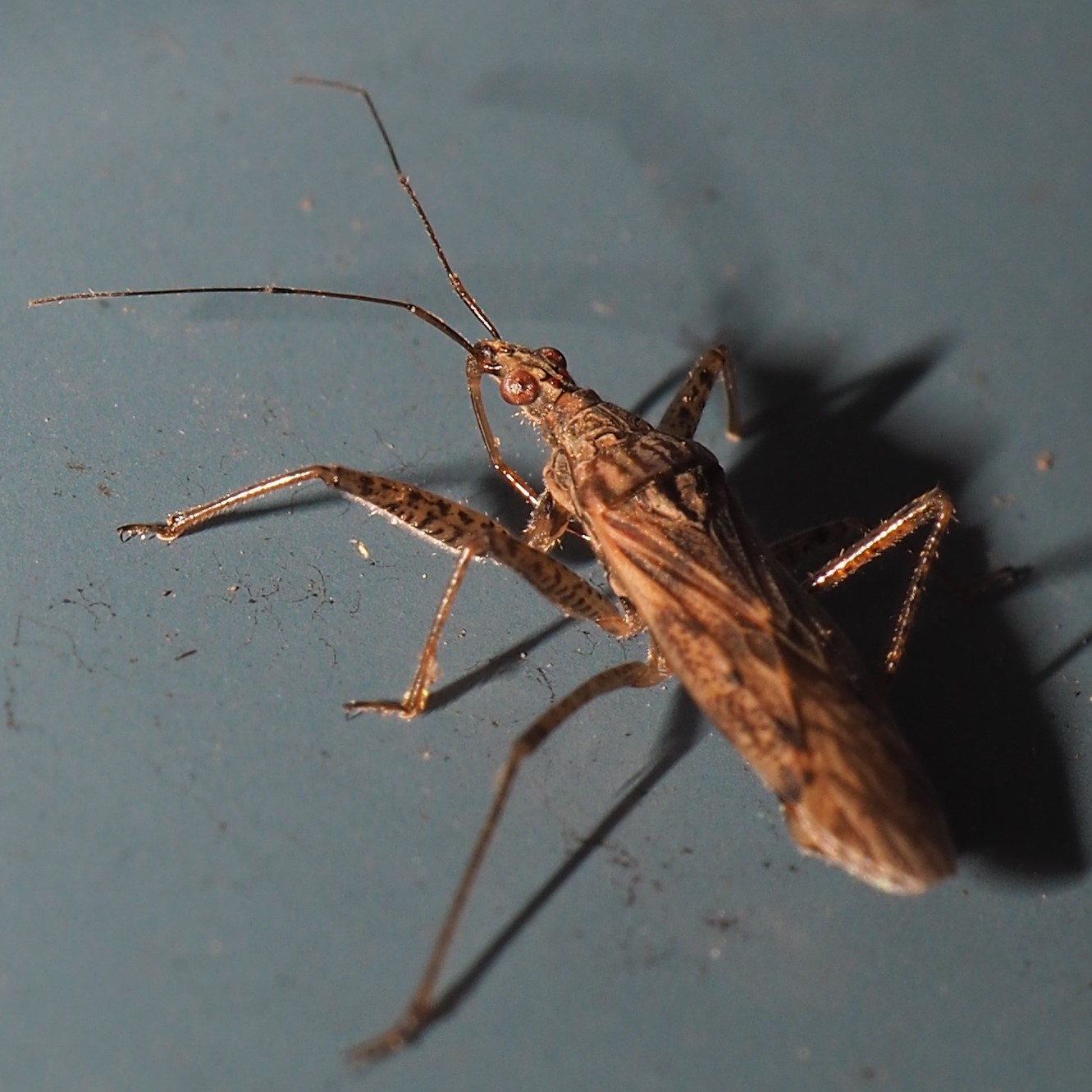 Here are a couple more Assassins (by trade if not by name). First is Emesaya brevipennis, one of the thread-legged bugs. Check out the arms! Second is Empicoris errabundus. I keep finding them in amongst my Barklice - they can clear out a bunch of nymphs very fast (as in picture 3).
Here are a couple more Assassins (by trade if not by name). First is Emesaya brevipennis, one of the thread-legged bugs. Check out the arms! Second is Empicoris errabundus. I keep finding them in amongst my Barklice - they can clear out a bunch of nymphs very fast (as in picture 3).
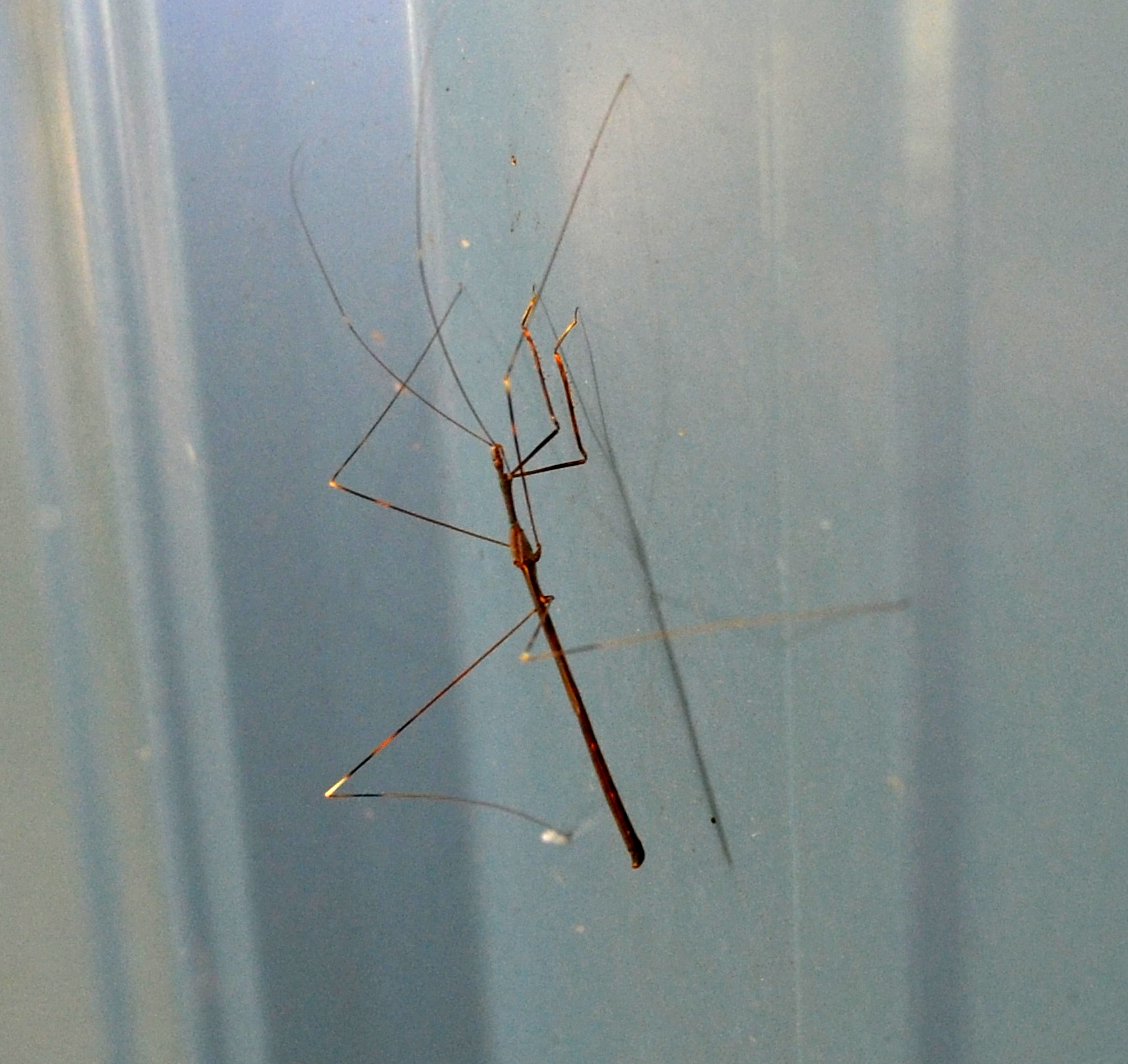

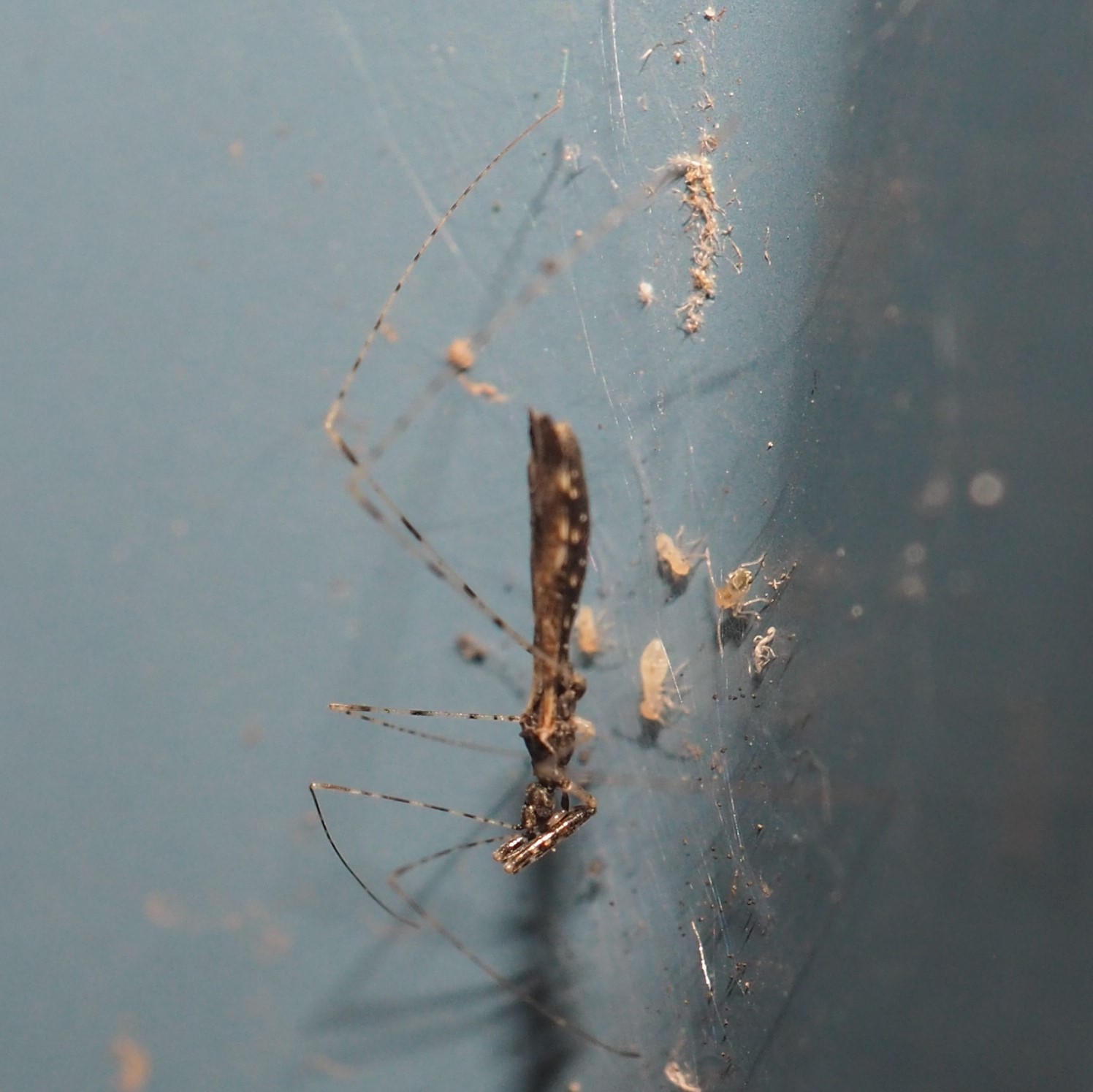
Some more predators - These don't look just like the ones above. They are the Ambush Bugs. Look at the CLAWS!
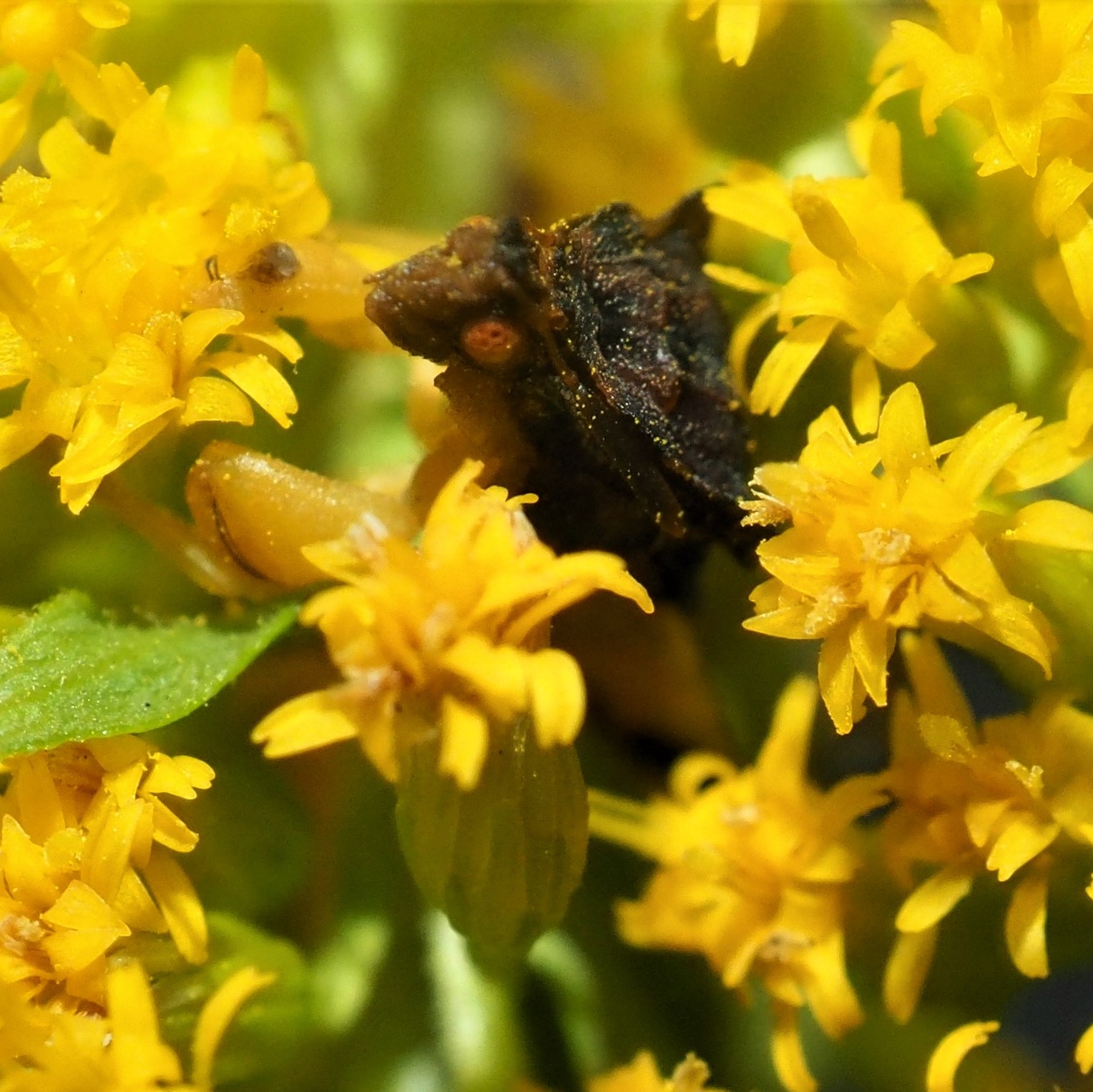

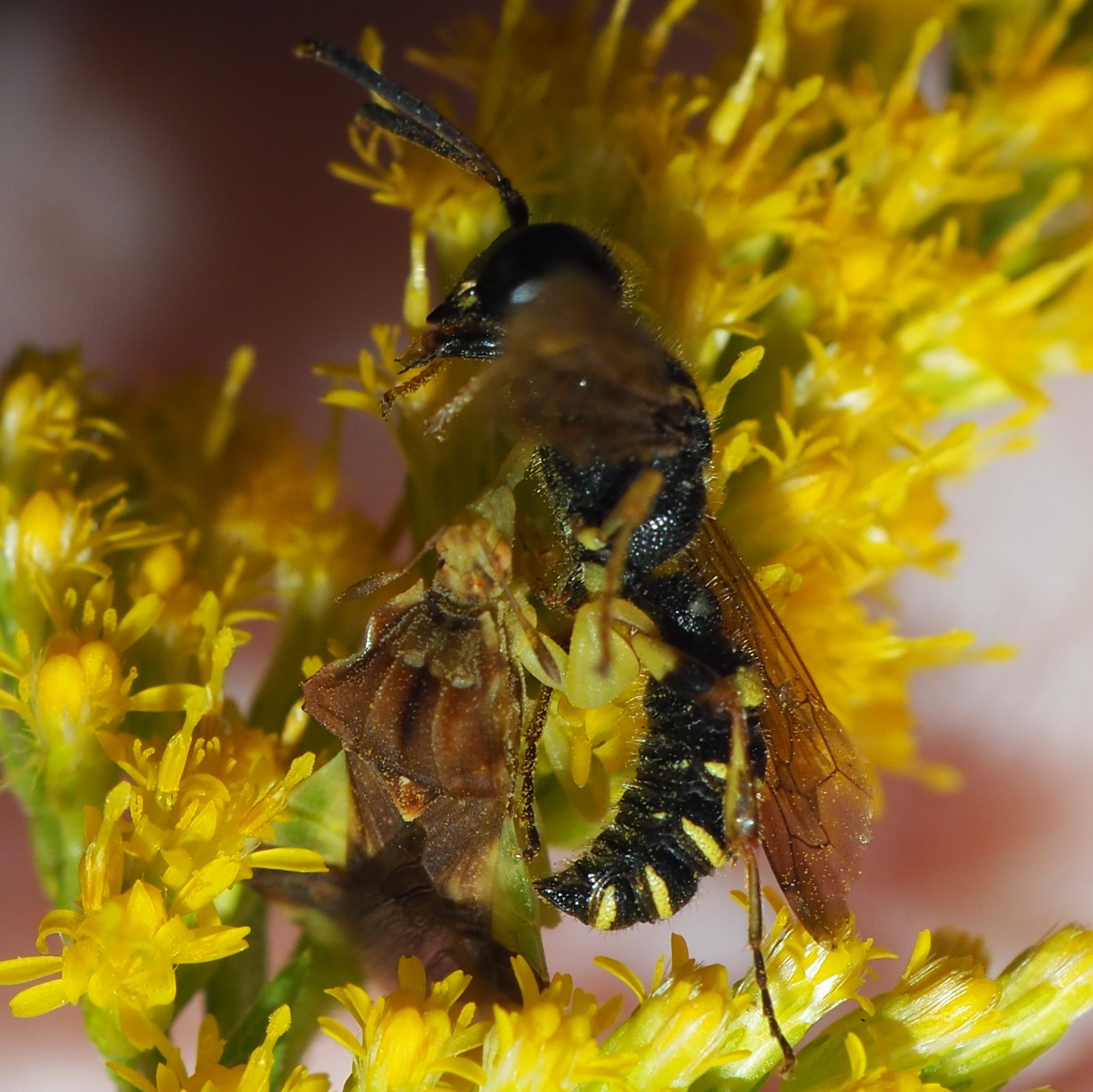
Back to Environment
All spiders have eight legs. They also have 2 segments: head and abdomen. Here are some of my favorites: The jumping spider Maevia inclemens is one that is famous for having at least 3 disguises : this one is a male; the next, a female of the same species; a huge and gorgeous Marbled Orbweaver. and a male Common House Spider.


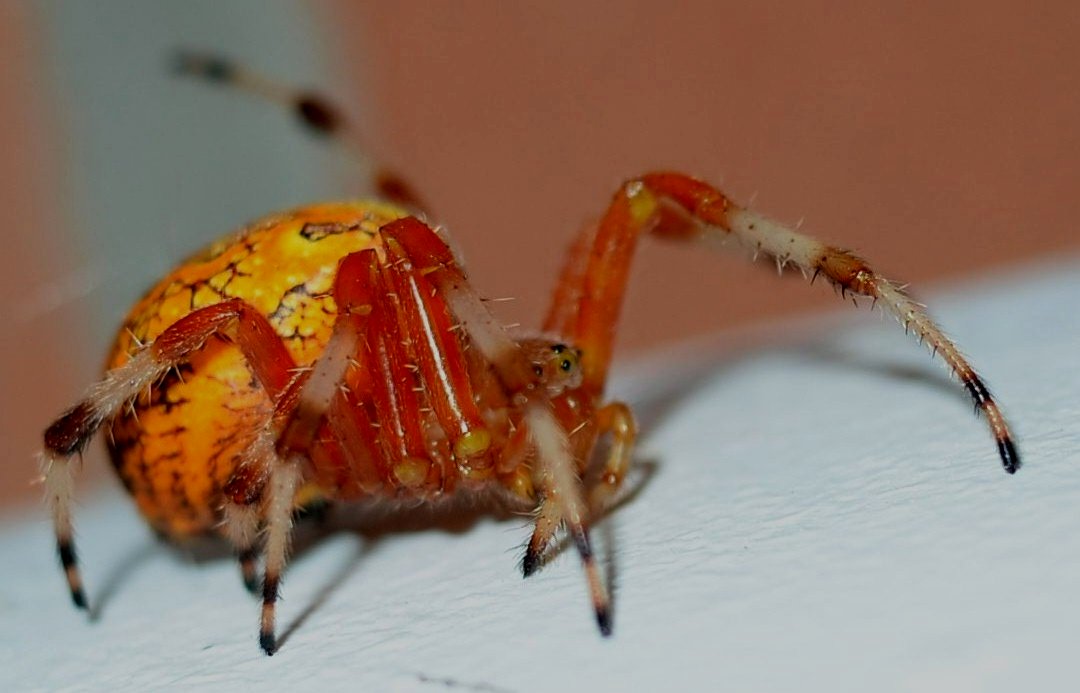
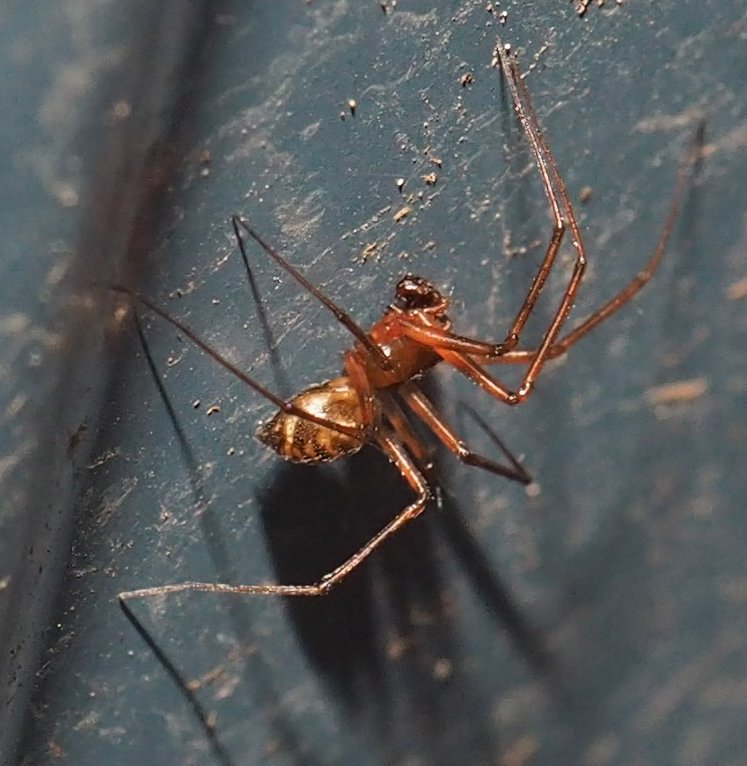
The crab spiders form a family of delicate and lovely spiders. Their colors may change as they move from green leaves to goldenrod or a white flower. Here we see the yellow brand on goldenrod, an unusual color pattern in purples, and a standard Northern Crab Spider in possession of a huge fly many times her size.
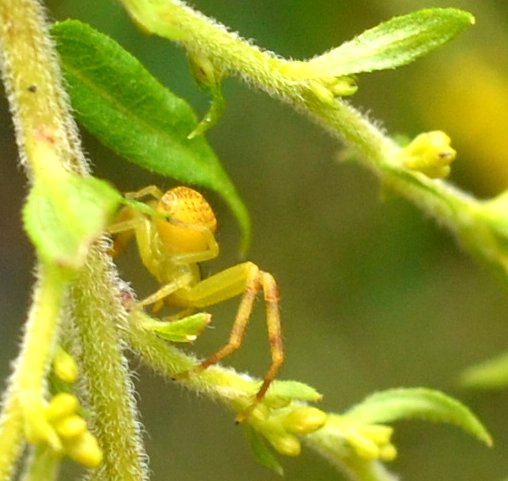
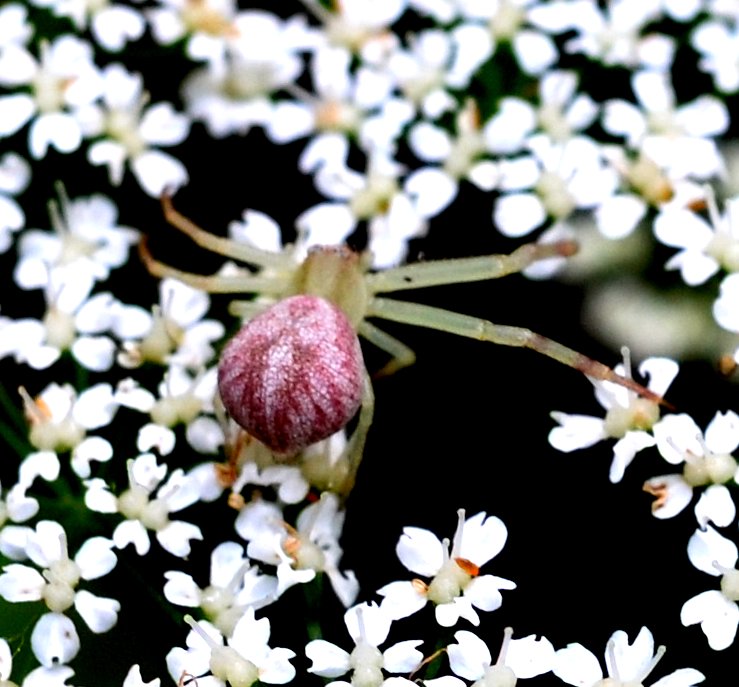
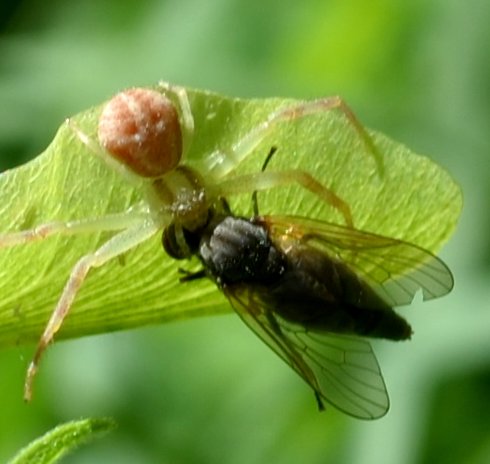
Spider Anatomy from Wikipedia
Reference:
by Spider_internal_anatomy.png: John Henry ComstockConversion to SVG: Pbroks13 (Ryan Wilson) (talk) - Anatomical information and original diagram from The Spider Book (1912, 1920) by John Henry Comstock. Additional anatomical information from Biology of Spiders (1996) by Rainer F. Foelix, CC BY 3.0, https://commons.wikimedia.org/w/index.php?curid=7477183
Daddy-long-legs (Harvestmen) have eight legs, and now we're down to ONE big segment: the cephalothorax (or combined head and
thorax (and abdomen)). "They have chelicerae, pedipalps and four pairs of legs. Most harvestmen have two eyes, although there are eyeless species." --Wikipedia.
Here are some of the kinds of Harvestmen found in my yard.
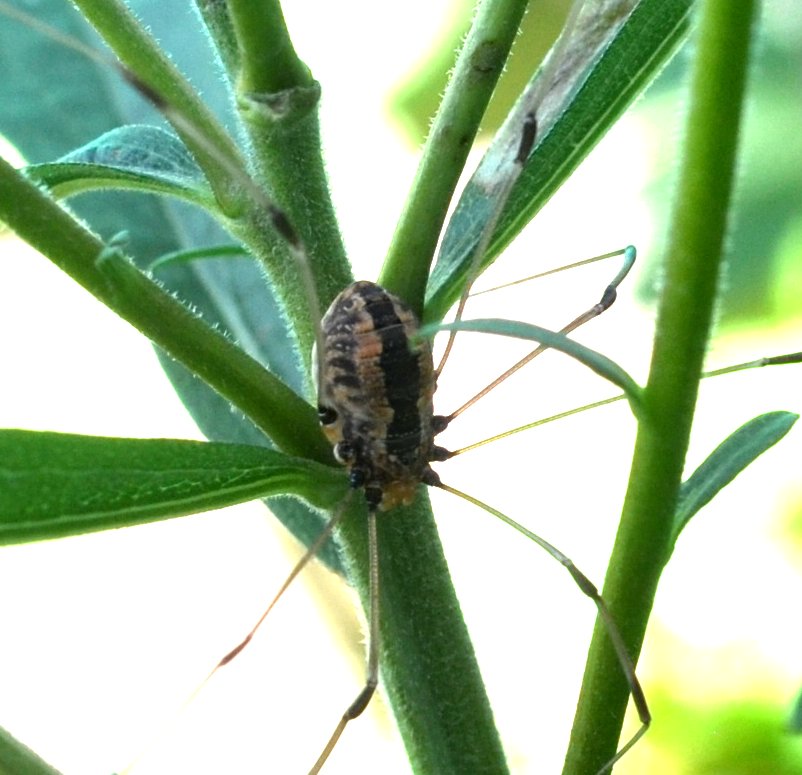
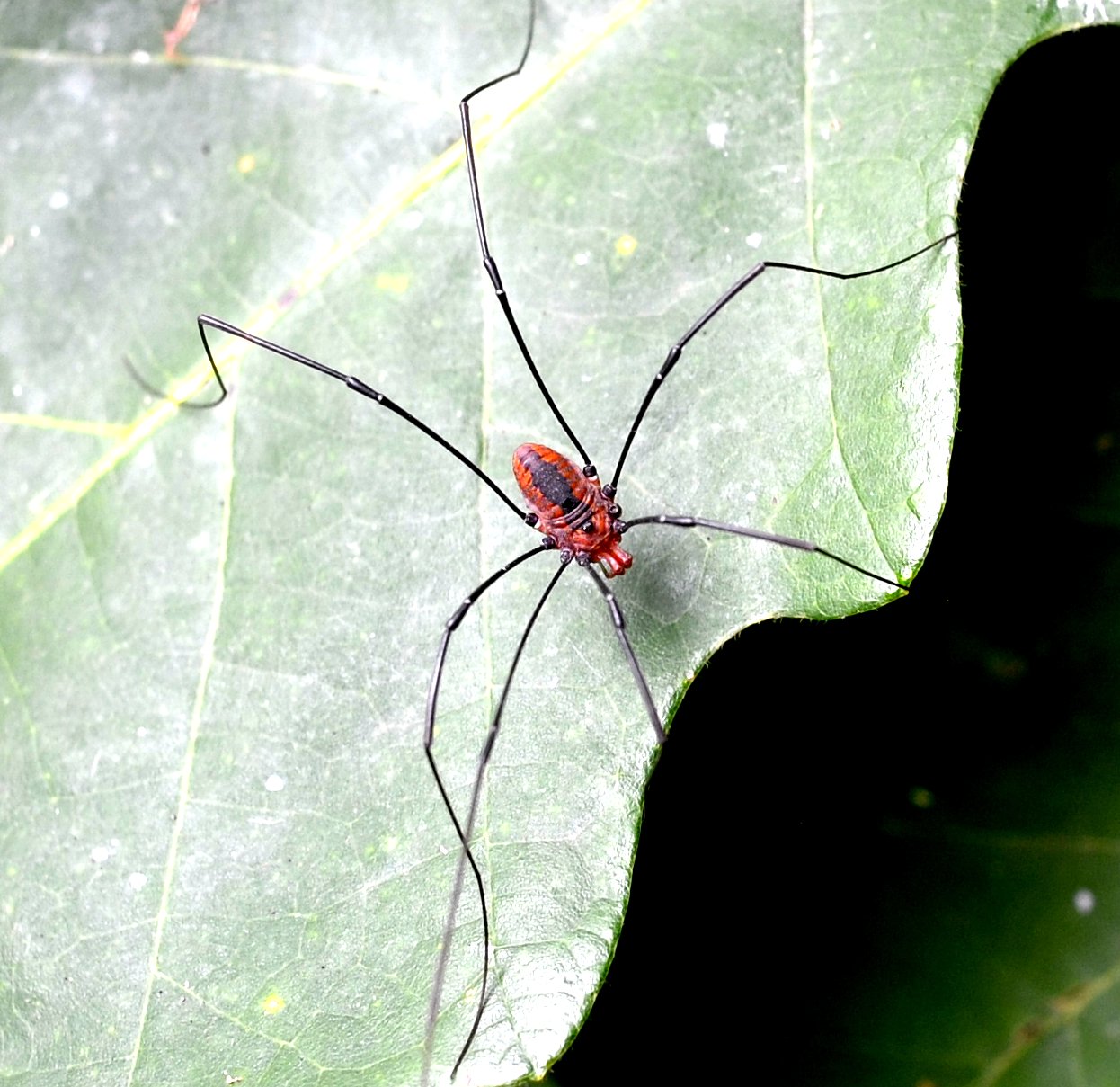
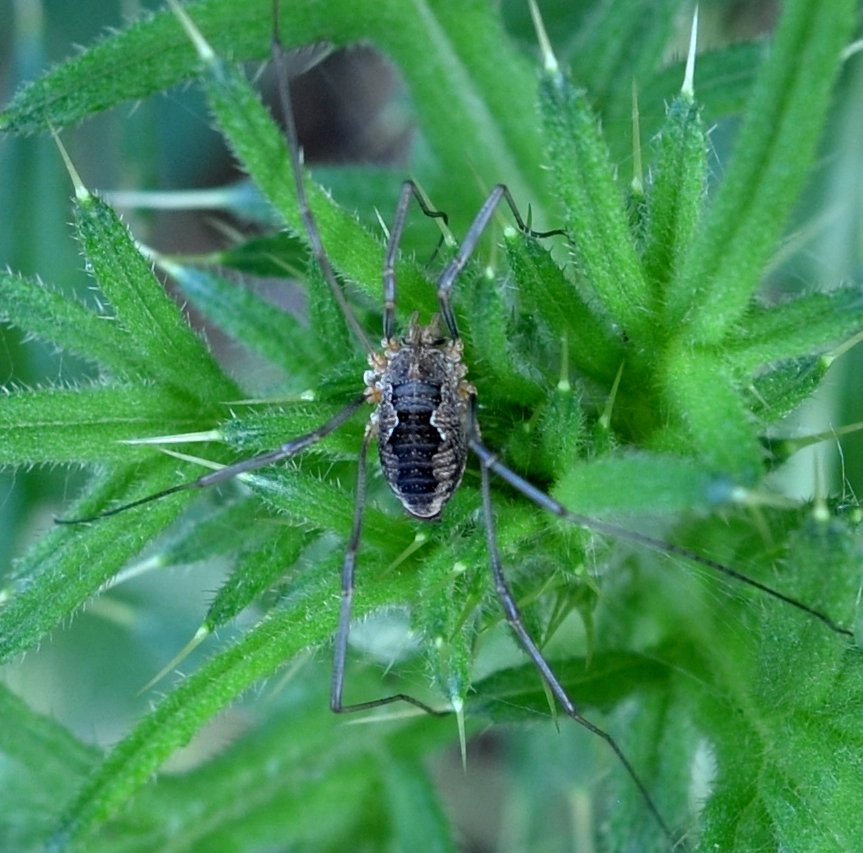
Pretty, aren't they? And an aggressive predator like the spiders.
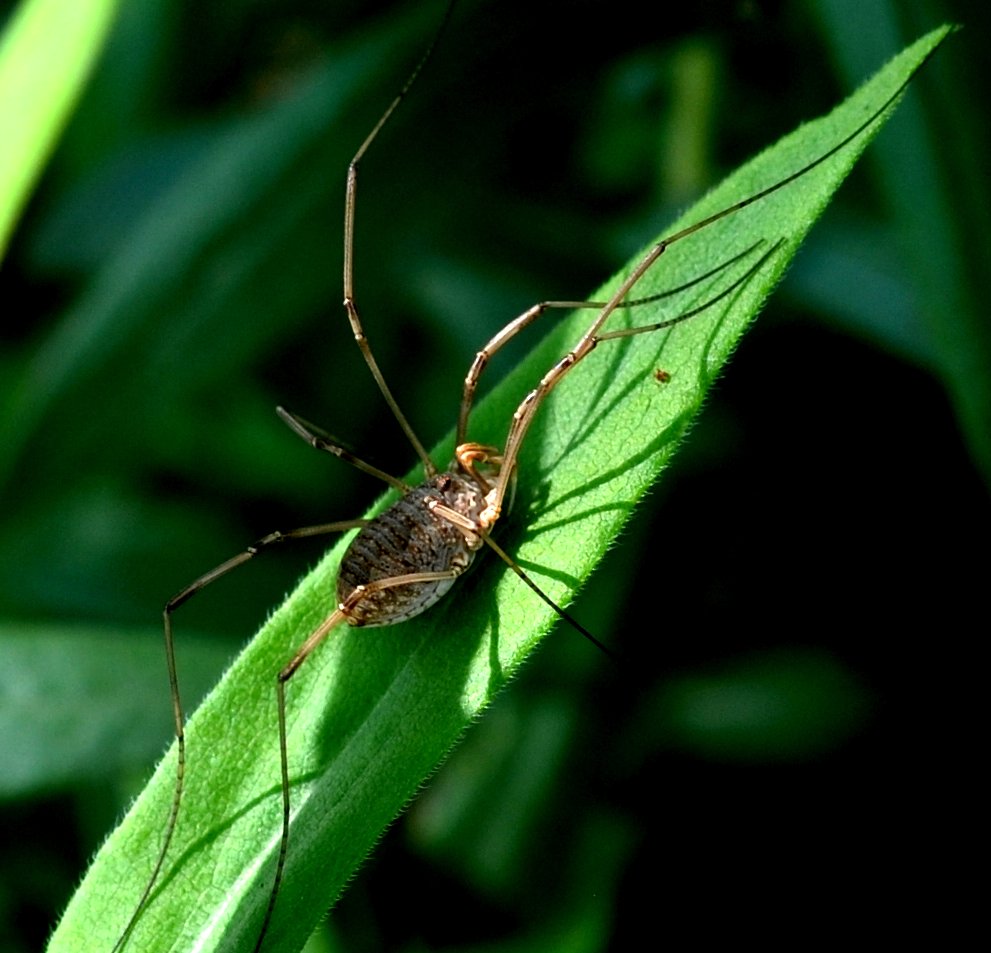
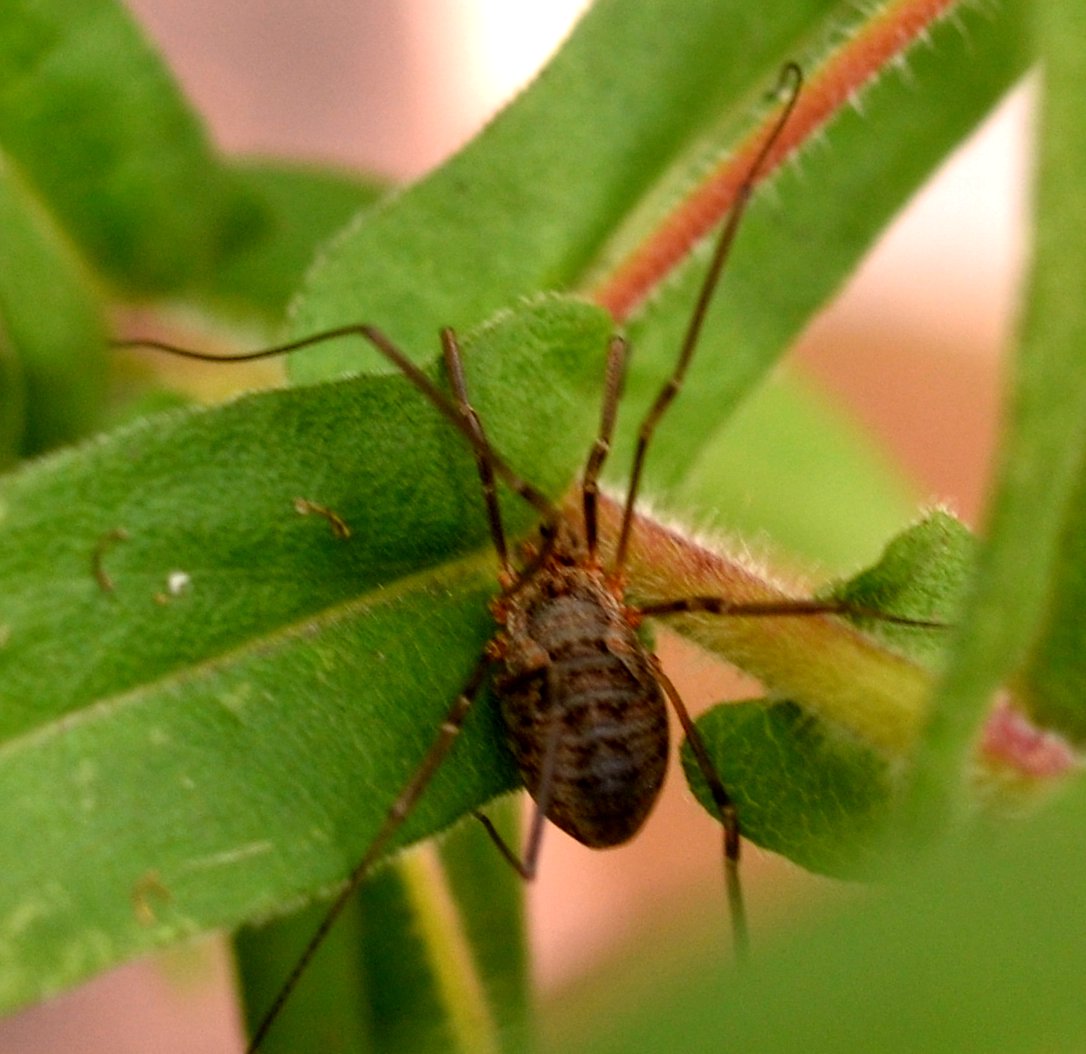
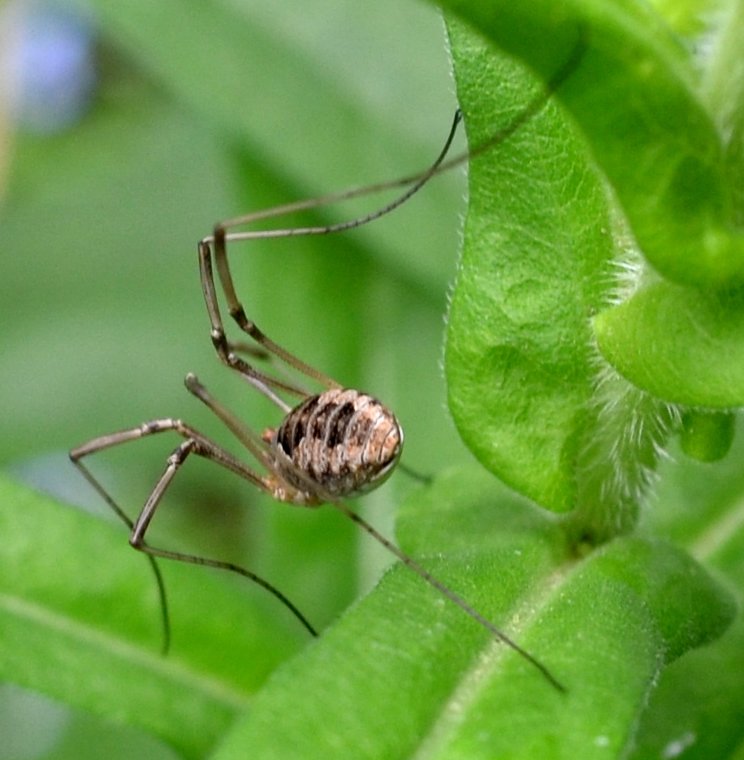
Now let's look at the many orders of the insects: (This is a British organization with lots of information on the orders)
Orders of Insects
copyright Martha O'Kennon 2018













 adult 6 9 15ab.jpg)

 7 13 17 1.jpg)
























